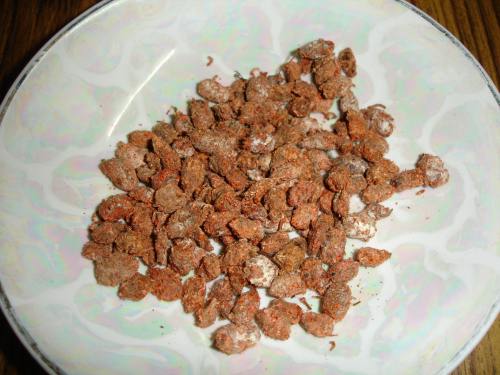|
Trombidium Semilunare
''Trombidium semilunare'' is a species of mite in the genus ''Trombidium'' in the family Trombidiidae. It is found in Romania Romania ( ; ro, România ) is a country located at the crossroads of Central, Eastern, and Southeastern Europe. It borders Bulgaria to the south, Ukraine to the north, Hungary to the west, Serbia to the southwest, Moldova to the east, a .... References * Synopsis of the described Arachnida of the WorldTrombidiidae Trombidiidae Endemic fauna of Romania Animals described in 1955 {{Trombidiformes-stub ... [...More Info...] [...Related Items...] OR: [Wikipedia] [Google] [Baidu] |
Mite
Mites are small arachnids (eight-legged arthropods). Mites span two large orders of arachnids, the Acariformes and the Parasitiformes, which were historically grouped together in the subclass Acari, but genetic analysis does not show clear evidence of a close relationship. Most mites are tiny, less than in length, and have a simple, unsegmented body plan. The small size of most species makes them easily overlooked; some species live in water, many live in soil as decomposers, others live on plants, sometimes creating galls, while others again are predators or parasites. This last type includes the commercially destructive ''Varroa'' parasite of honey bees, as well as scabies mites of humans. Most species are harmless to humans, but a few are associated with allergies or may transmit diseases. The scientific discipline devoted to the study of mites is called acarology. Evolution and taxonomy The mites are not a defined taxon, but is used for two distinct groups of arachnids ... [...More Info...] [...Related Items...] OR: [Wikipedia] [Google] [Baidu] |
Trombidium
''Trombidium'' is a genus of mite with about 30 described species. Species * '' Trombidium auroraense'' Vercammen-Grandjean, Van Driesche & Gyrisco, 1977 – New York * '' Trombidium breei'' Southcott, 1986 – Europe (host: ''Agapetes galathea'', Lepidoptera) * '' Trombidium brevimanum'' (Berlese, 1910) – Europe * '' Trombidium cancelai'' (Robaux, 1967) – Spain * '' Trombidium carpaticum'' (Feider, 1950) – France, Romania * † '' Trombidium clavipes'' Koch & Berendt, 1854 – Fossil: Oligocene * '' Trombidium dacicum'' (Feider, 1950) – Poland, Romania * '' Trombidium daunium'' (Paoli, 1937) – Italy * '' Trombidium fturum'' Schweizer, 1951 – Spain, Switzerland * '' Trombidium fuornum'' Schweizer, 1951 – Poland, Switzerland, France * '' Trombidium geniculatum'' (Feider, 1955) – Spain, Romania, Poland, Norway * '' Trombidium grandissimum'' (Koch, 1867) - India * '' Trombidium heterotrichum'' (Berlese, 1910) – Europe * '' Trombidium holosericeum'' (Linnaeus, 17 ... [...More Info...] [...Related Items...] OR: [Wikipedia] [Google] [Baidu] |
Trombidiidae
Trombidiidae, also known as red velvet mites, true velvet mites, or rain bugs, are small arachnids (eight-legged arthropods) found in plant litter and are known for their bright red color. While adults are typically in length, some, such as the genus ''Dinothrombium'', may reach up to . Their life pattern is in stages similar to other members of the Prostigmata: egg, pre-larva, larva, protonymph, deutonymph, tritonymph and adult (male or female). They usually have only one breeding cycle per year.Zhang, Zhi-Qiang (1998) Biology and ecology of trombidiid mites (Acari: Trombidioidea) Experimental & Applied Acarology 22:139–15PDF/ref> They are active predators as grown adults. As early instars they are often parasites of insects and other arachnids. One well known species from Europe, Asia, and North Africa is ''Trombidium holosericeum''. The systematics of this group has been in flux and many former subfamilies of this are now raised to families within the Trombidioidea. L ... [...More Info...] [...Related Items...] OR: [Wikipedia] [Google] [Baidu] |
Romania
Romania ( ; ro, România ) is a country located at the crossroads of Central, Eastern, and Southeastern Europe. It borders Bulgaria to the south, Ukraine to the north, Hungary to the west, Serbia to the southwest, Moldova to the east, and the Black Sea to the southeast. It has a predominantly temperate- continental climate, and an area of , with a population of around 19 million. Romania is the twelfth-largest country in Europe and the sixth-most populous member state of the European Union. Its capital and largest city is Bucharest, followed by Iași, Cluj-Napoca, Timișoara, Constanța, Craiova, Brașov, and Galați. The Danube, Europe's second-longest river, rises in Germany's Black Forest and flows in a southeasterly direction for , before emptying into Romania's Danube Delta. The Carpathian Mountains, which cross Romania from the north to the southwest, include Moldoveanu Peak, at an altitude of . Settlement in what is now Romania began in the Lower Pale ... [...More Info...] [...Related Items...] OR: [Wikipedia] [Google] [Baidu] |
Endemic Fauna Of Romania
Endemism is the state of a species being found in a single defined geographic location, such as an island, state, nation, country or other defined zone; organisms that are indigenous to a place are not endemic to it if they are also found elsewhere. For example, the Cape sugarbird is found exclusively in southwestern South Africa and is therefore said to be ''endemic'' to that particular part of the world. An endemic species can be also be referred to as an ''endemism'' or in scientific literature as an ''endemite''. For example ''Cytisus aeolicus'' is an endemite of the Italian flora. '' Adzharia renschi'' was once believed to be an endemite of the Caucasus, but it was later discovered to be a non-indigenous species from South America belonging to a different genus. The extreme opposite of an endemic species is one with a cosmopolitan distribution, having a global or widespread range. A rare alternative term for a species that is endemic is "precinctive", which applies to sp ... [...More Info...] [...Related Items...] OR: [Wikipedia] [Google] [Baidu] |
_Lorryia_formosa_2_edit.jpg)

.jpg)